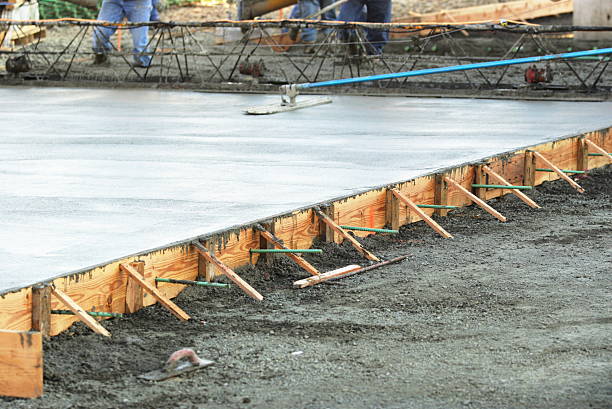Concrete building materials are the favored prima donna for building a variety of structures, including not only homes but also highways, streams, and parking lots. Based on its strength and purpose, concrete quality is categorized into a number of categories in the building industry.

The price can be impacted by the wide variety of concrete quality available on the market. Concrete quality can be separated into classes according to its applications. The quality of the concrete is a key factor in determining how it will be applied to constructing structures. Based on the use and choice of the concrete material’s composition, the quality of the concrete itself can change. High-rise structures, docks, silos, chimneys, tunnels, aprons, dams, and bridge structures, as well as buildings with a compressive strength of up to 40 MPa, are often meant for high-quality concrete. For walls and floors, lower-grade concrete is frequently used.
The Quality of Concrete Buildings and Their Applications
One of the key characteristics of concrete is its quality, which is typically represented by units of numbers and letters. In Indonesia, K is typically used as the unit of concrete quality. The compressive strength of concrete with a size per cm2 is known as concrete quality K.
There are many levels of concrete quality, ranging from K100 to K500. The load in kilograms is indicated by the number that follows the letter K. The strength of concrete can reach 100 kg/cm2 if its quality is K100. According to SNI guidelines, there are three categories of concrete quality:
Concrete of Grade 1 Quality
The lowest kind of non-structural work does not require any specialized knowledge or skills to be carried out. This type of concrete does not directly use cast iron as a structural reinforcement ingredient during construction. Since there is no need for additional inspection stages to evaluate the intensity of the pressure, the monitoring of its use can be relatively low with monitoring limits that concentrate on the quality of the materials employed. The lowest grades of concrete, K-100, K-125, K-150, K-175, and K-200, are used for foundations for columns or for building roads.
Concrete of Grade 2 Quality
Then there is medium-grade concrete, which is generally utilized in many different types of structural work. Based on its original purpose, the amount of iron reinforcement added during the casting mixture’s mixing process differentiates this concrete’s quality.
The preparation of steel structure frames, formwork, finishing concrete, masonry, and other operations all benefit from the structural class. Its use demands the necessary skills, and it must be supervised by construction professionals with experience managing projects that fall under the medium category.
This class includes the K-225, K-250, and K-275 divisions. These materials can be used to construct multi-story homes, formwork, multi-story steel buildings, or masonry.
Concrete of Grade 3 Quality
Also known as prestressed concrete, this material uses steel as its primary ingredient to make up for the fact that concrete has poor tensile strength despite its capacity to sustain high pressure. A combination that is tension-free and structurally strong against pressure loads can be made using steel’s high tensile strength-known features.
It makes sense that its use requires specialized knowledge and must be carried out under the supervision of qualified experts. This class III contains the building materials K-325, K-350, K-375, K-450, and K-500, which are typically used to build heavy vehicle parking spaces for trucks including truck cargo, drainage canals, and runways.


